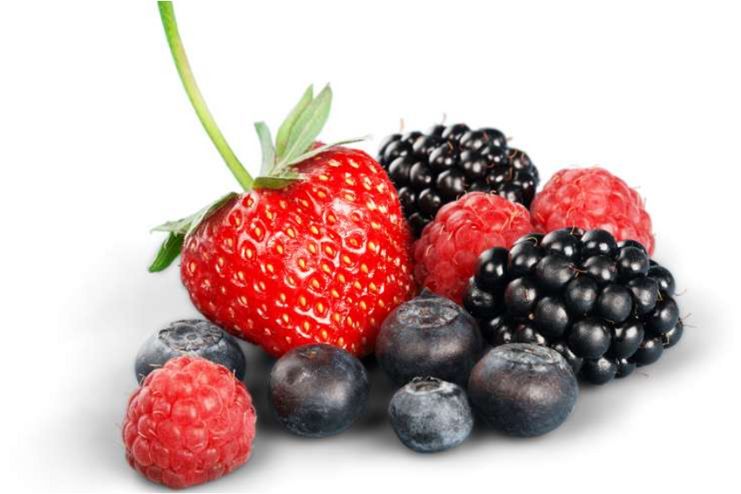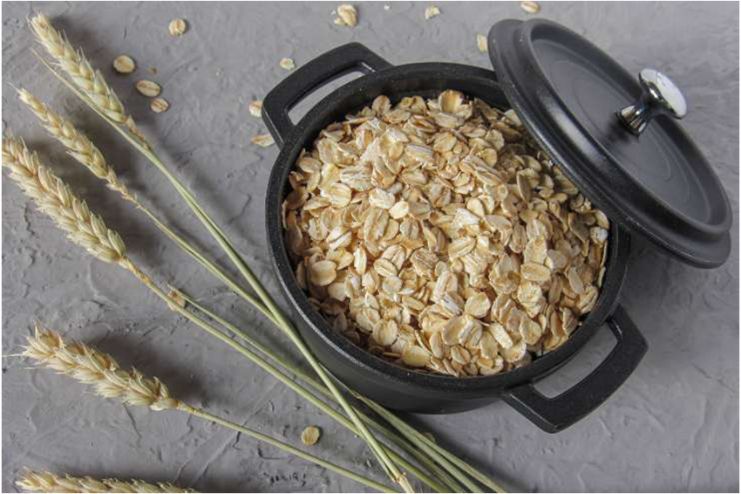Affiliate Disclaimer
Some links in this article are affiliate links. We may earn a small commission if you make a purchase through these links, at no extra cost to you. We only recommend products we find useful to our readersSeasonal Affective Disorder (SAD) is more than just the “winter blues.” It’s a type of depression that typically emerges during the colder, darker months, often when the days shorten and the sunlight fades. As the seasons shift, you might notice your mood sinking along with the temperature, leaving you feeling unexpectedly exhausted despite getting enough sleep.
Common symptoms of SAD include prolonged feelings of sadness, disrupted sleep patterns (such as insomnia or oversleeping), and heightened irritability.
But what exactly triggers this shift in mood during the winter months?
The primary culprit is lack of sunlight, which throws off our internal body clocks and significantly reduces serotonin levels—an important neurotransmitter that helps regulate mood. But did you know certain foods can naturally boost your mood and help counteract these effects? A proper diet can be a powerful ally in combating SAD symptoms.
This article explores ten nutrient-packed foods to boost mood and energy during SAD Awareness Month, highlighting how a proper diet can enhance well-being and improve your quality of life during those darker months.
The Role of Nutrition in Managing SAD
About 6% of people in the UK and 2-8% in higher-latitude nations like Sweden, Canada, and Denmark suffer from SAD, which typically strikes during winter. Similarly, nearly about 5% of adults in the U.S. experience SAD, lasting approximately 40% of the year. Interestingly, women, especially in their early adult years, make up about 80% of victims.
According to scientists like Dr. Robert Levitan, a professor at the University of Toronto, this might be because of evolutionary factors that encourage women of reproductive age to slow down in the winter to conserve energy and have healthier pregnancies.
Nutrition plays a key role in managing SAD. Eating nutrient-dense foods can improve mood, reduce stress, and boost serotonin, the brain chemical linked to happiness. Complex carbs like sweet potatoes and whole grains help increase serotonin production. Combining a healthy diet with therapies like light treatment and counseling offers the best results for mental well-being.
Key Nutrients to Prioritize for Managing SAD:
- Omega-3 Fatty Acids: Eicosapentaenoic acid (EPA) and docosahexaenoic acid (DHA) are associated with reduced depression.
- Vitamin D: Facilitates the body’s production of feel-good hormones, including dopamine and serotonin.
- B-Vitamins: B vitamins participate in enzymatic activities that promote the balance required for mental well-being.
- Magnesium: The body uses magnesium to help with chemical reactions that produce serotonin and melatonin, two feel-good chemicals.
- Antioxidants: Consuming antioxidants is linked to improving symptoms of anxiety and depression.
Top 10 Mood-Boosting Foods to Help Manage SAD
-
Salmon and Fatty Fish:

Omega-3 fatty acids, which have anti-inflammatory and antidepressant effects, are abundant in salmon, mackerel, and sardines. These good fats promote the synthesis of serotonin, which can improve your mood and also fight depression.
Grilled salmon is always delicious for dinner. If you’re feeling adventurous, try Japanese or Korean food, where mackerel is a staple in dishes like spicy mackerel stew and grilled mackerel. Eat sardines on toast or add them to salads for a delicious snack.
-
Eggs:

Eggs are a great source of vitamin D, essential for mood regulation, and not just for breakfast. Eggs contain B vitamins, which are also necessary for healthy brain function. Eggs can give your body the nutrients it needs to feel more balanced and energized throughout the winter, whether scrambled, boiled, or poached.
-
Leafy Greens:

Leafy greens such as collards, bok choy, kale, and spinach are rich in B vitamins, which are essential for brain health. According to a research study, a general lack of this vitamin group may be linked to mood disorders in some individuals.
Folate aids in mood regulation and may reduce the depressive and irritable symptoms that frequently accompany SAD. Incorporate these colorful greens into smoothies, salads, and soups for a wintertime mood boost.
-
Dark chocolate:

Although sugary foods can temporarily raise serotonin, they lead to a crash that makes your mood worse. Dark chocolate is a better choice. It is delicious but has less sugar due to its high cocoa content. In contrast to 90% cocoa dark chocolate, which has only 2 grams of sugar per ounce, 70% dark chocolate has 9 grams. Dark chocolate is a healthier option for a mood boost without the sugar crash.
Dark chocolate, which is high in flavonoids, has been associated with elevated serotonin levels, which may help reduce depressive symptoms. Flavonoids shield your body from everyday pollutants and stressors while promoting better bodily function.
-
Berries:

Besides giving you an additional vitamin C boost, the natural sweetness of strawberries and blueberries can help make your winters brighter. Raspberries, blueberries, and strawberries fight oxidative stress with their antioxidants, helping combat mood disorders. Add these versatile berries to yogurt, blend them into pancakes, or use them as a sweet salad garnish.
-
Coffee:

Coffee can be a go-to remedy for a sluggish mood. Caffeine blocks a naturally occurring substance called adenosine from binding to brain receptors, which can cause fatigue, although it may lead to restlessness or anxiety in some individuals.
While caffeine increases the release of neurotransmitters like dopamine and norepinephrine, which produce emotions of enjoyment and contentment, arouse the body, and aid in brain functioning, it suppresses the activity of adenosine.
However, excessive caffeine can disrupt sleep patterns, so it’s best to consume it in moderation and avoid it in the evening for steady energy and restful sleep.
-
Bananas:

Bananas contain vitamin B6, which is essential for synthesizing serotonin. Tryptophan, an amino acid precursor to serotonin, is abundant in these yellow treats.
Enjoy them as a great on-the-go snack, bake them into muffins, blend them into smoothies, or slice them onto cereal. Store them in your kitchen for a quick snack to help you stay mentally well during winter.
-
Oats:

Oats are a great breakfast option because they release energy gradually, avoiding mood-altering sugar spikes and dips. On a chilly morning, a warm bowl of oatmeal is the ideal comfort food to start your day. You can also use them to make granola bars, homemade granola, savory oatmeal with vegetables, or overnight oats with nuts and fruits.
-
Nuts and Seeds:

Nuts and seeds, including flaxseeds, chia seeds, and walnuts, are excellent sources of omega-3 fatty acids. Walnuts are versatile and can be sprinkled on almost any dish. You can enhance the flavor of salads by adding walnuts or enjoy them as a standalone snack. Chia and flax seeds can easily be added to smoothies for a nutritious boost.
-
Citrus Fruits:

Citrus fruits are packed with vitamin C, alleviating stress and improving mental clarity. Boosting your mood with these tangy and refreshing beverages is a great way to combat the winter blues and improve your overall mood. Add a lemon wedge to your tea or a glass of fresh orange juice to brighten your day.
Incorporating Mood-Boosting Foods into Your Diet
The cold of winter can easily disrupt your mood, but it doesn’t have to be challenging to include foods that improve your mood in your meals. Here are some easy ways to include mood-boosting foods throughout the day:
Breakfast:
- Start your day with a smoothie made with berries, bananas, and spinach for a nutrient-dense breakfast that can improve your mood.
- Add a scoop of flaxseed or chia seeds for an additional boost of omega-3s from nature’s pantry.
Lunch:
- For a lunchtime boost of vitamin D and brain-boosting omega-3s, make a salad with leafy greens like kale and top it with hard-boiled eggs or grilled salmon.
- Prepare it for meal prep to ensure you always have a tasty, uplifting option.
Snack:
- Time for a snack? Have a variety of dark chocolate, almonds, and walnuts on hand.
- This combination is ideal for preventing mid-afternoon slumps because it contains magnesium, antioxidants, and serotonin-boosting chemicals.
Dinner:
- Dinner can be both nourishing and cozy. Stir-fry salmon with roasted vegetables garnished with a squeeze of lemon for extra zing.
- For dessert, serve a bowl of oat and chia pudding with berries and honey.
Boost your mood naturally with foods and explore the 5 Best Sun Lamps for SAD Relief!
When to Seek Professional Help
Although adding foods that improve your mood to your diet can be a great way to manage Seasonal Affective Disorder (SAD), knowing when you might need more help is essential. It’s time to see a healthcare provider if you suffer from chronic hopelessness or if feelings of sadness, exhaustion, or irritability substantially disrupt your day-to-day activities.
Since SAD is a medical condition, treatments like counseling, medicine, or light therapy may be necessary for severe symptoms. A specialist can offer a customized treatment program to assist you in regaining balance and overall health.
Never be afraid to look for support from organizations such as the National Alliance on Mental Illness (NAMI) or get in touch with a nearby therapist or mental health specialist who specializes in mood disorders if you need help right away.
Recall that asking for assistance is a show of strength rather than weakness. You deserve to be healthier and happier!
Conclusion
Even minor, thoughtful adjustments to our diet and lifestyle can significantly impact mental health, as SAD Awareness Month reminds us. Even on the darkest winter days, you can keep your mind and body healthy by adopting a diet rich in nutrients and mood-enhancing foods. Take control of your health for a happier, healthier winter, and include these mood-enhancing foods in your daily routine.
References
- https://www.rupahealth.com/post/the-role-of-nutrition-in-managing-depression-foods-that-boost-mood
- https://kaizennutritionwellness.com/nutrition-for-mental-health-seasonal-affective-disorder-sad/
- https://foodforthebrain.org/sad-how-to-prevent-and-manage-symptoms-with-nutrition-and-lifestyle-changes/
- https://aneweratms.com/the-role-of-nutrition-in-mental-health/
- https://communityhealth.mayoclinic.org/featured-stories/mood-boosting-foods
- https://www.everydayhealth.com/depression/the-best-foods-to-soothe-seasonal-depression/
- https://www.mountelizabeth.com.sg/health-plus/article/mood-boosting-foods
- https://www.realsimple.com/health/mind-mood/mood-boosting-foods
- https://www.healthline.com/nutrition/mood-food
- https://www.medicalnewstoday.com/articles/318428
- https://www.webmd.com/depression/ss/slideshow-foods-fight-depression
- https://www.piedmont.org/living-real-change/5-foods-to-eat-when-you-are-depressed
- https://www.nami.org
- https://safeinourworld.org/a-to-z/seasonal-affective-disorder
- https://www.psychiatry.org/patients-families/seasonal-affective-disorder
- https://www.camh.ca/en/science-and-research/science-and-research-staff-directory/robertlevitan
- https://www.medparkhospital.com/en-US/lifestyles/caffeine
- https://www.healthline.com/nutrition/mood-food#fatty-fish
- https://www.health.harvard.edu/blog/omega-3-fatty-acids-for-mood-disorders-2018080314414
- https://animosanopsychiatry.com/the-role-of-vitamin-b-group-in-mental-health
- https://www.fairfieldsleeptmj.com/tmd-magnesium-and-seasonal-affective-disorder-sad
- https://www.medicalnewstoday.com/articles/318428#antioxidants
- https://www.healthline.com/health/what-are-flavonoids-everything-you-need-to-know#function
In this Article




















